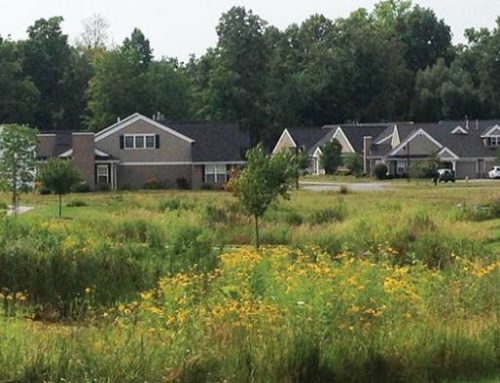When it comes to preserving our environment, every drop in the bucket counts, and even a little mindfulness about the way we live can make a significant difference. This series will explore three different areas where we can make minor adjustments in our daily lives to reduce our negative impact on the planet: water, product packaging/recycling, and transportation.
Fresh water may be our most precious resource. We in the North East are lucky, since the Great Lakes account for 21% of Earth’s fresh water. However, even though our area is water-rich, when we contaminate our fresh water supplies, we can no longer count on them to provide drinking water, as we have seen with cases such as Flint, MI. When an area loses its fresh water supply, more strain is put on other water supplies (all that bottled water has to come from somewhere, right?). So the question arises- what can be done to reduce our impact?
One way to reduce our impact on fresh water is to reduce contamination by runoff. Runoff is water that flows off of impermeable pavement (picking up contaminants on the way), and enters the water table through storm drains, without being first filtered by the ground. When water passes through the ground, which is permeable, pollutants are filtered out by the soil and plants. When doing things like cleaning out chemical containers, or washing the car, consider where that dirty water ends up- it should emptied into an unpaved area. Installing an eco-swale or rain garden can help channel water from impermeable surfaces, so that it filters through the soil. There are also permeable pavers available, which allow water to go directly though the ground, rather than running to the storm drains. Chemicals should absolutely never be poured directly into a storm drain.
Reducing water consumption also reduces our impact on water supplies. According to conserveh2o.org, three large areas of household consumption are: flushing the toilet, personal hygiene, and cleaning. With older toilets, each flush can use up to 7 gallons of water. Installing a newer toilet, which face stricter regulations and only consume about 1.6 gallons per flush, will drastically cut down a person’s water consumption. Water usage for faucets (the primary source of water for personal hygiene and cleaning) is measured by gallons per minute, or GPM. On average, shower faucets use about 2.1 gallons of water per minute, if you shower for 30 minutes, that’s 63 gallons of water. To reduce water consumption while showering, consider shorter showers, turning off the faucet while you lather up, or not using the water on full power. If you have a garden or house plants, you can catch water in a container while you wait for it to heat up, and then use it to water your plants. Essentially, the longer a faucet is left running, the more water will be used, so it’s especially wasteful to leave the faucet running while the water is not being used. While cleaning, be mindful of how you are using your water. For example, less water is used by scraping plates after dinner instead of rinsing, or using your dish washer’s rinse cycle instead of the tap. Laundry requires a lot of water, but you end up using less water over time if laundry is done in full loads, rather than frequent partial loads. Rain water harvesting is another way to reduce water consumption. Installing a rain barrel allows you to collect clean rain water, which can then be used for cleaning, or irrigation. For people who are serious do-it-yourself-ers, there are home water treatment kits available, which make harvested rain water potable for drinking and bathing. Again, installing newer plumbing equipment, or an aerator (device that uses air rather than water to maintain good water pressure) can reduce the GPM use.
Tune in next week, as we continue the discussion with product packaging/recycling.



